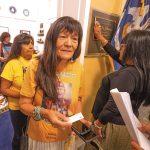
Billiman matriarch, niece remain strong in face of adverse health conditions caused by radiation exposure
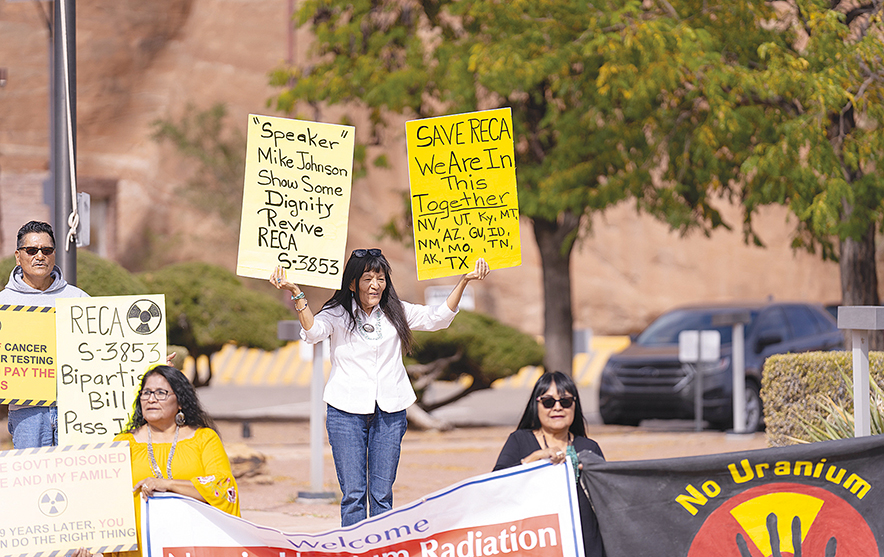
Special to the Times | Donovan Quintero
Maggie Billiman from Sawmill, Ariz., top center, holds signs in the air as she and others pose for photos on Monday in Window Rock.
WINDOW ROCK
Since September, when she traveled to Washington, D.C., to tell House Speaker Mike Johnson to renew the Radiation Exposure Compensation Act, Maggie Billiman has had her gallbladder removed.
Now she is awaiting more possibly devastating news about her liver. And if that wasn’t enough bad news, she said she was also told she has three cysts on her pancreas.
“I just had surgery and I’m still in a lot of pain,” she said on Dec. 26, referring to her gallbladder removal surgery.
A downwinder victim, Billiman, and about 30 others from the Navajo Nation, Laguna, and Acoma Pueblo tribes traveled to Washington, D.C., in September to advocate for the passage of Missouri Republican Sen. Josh Hawley’s RECA legislation.
For 17 years, from 1945 and 1962, the U.S. conducted nearly 200 atmospheric nuclear weapons development tests. Atmospheric nuclear tests are when nuclear bombs are exploded in the air, instead of underground or underwater.
At the heart of the bombs involved uranium mining and processing, which was performed by tens of thousands of workers, like Maggie’s father.
Maggie’s father, a member of the legendary Navajo Code Talkers Howard Billiman Sr., worked in the uranium mines.
“My dad had died of stomach cancer, he was one of the Navajo Code Talkers, and he passed away,” she said.
Her father worked at the Kennecott Mine in Utah. He also worked at the Kingman Mine in Arizona in the 1950s through the 1960s, Maggie said.
After the tests ended in 1962, many of the uranium miners and process workers initiated class action lawsuits claiming exposure to known radiation hazards.
Landmark class-action lawsuit
The Begay v. United States case, filed in 1984, was a landmark class-action lawsuit brought on behalf of over 1,000 Navajo uranium miners and their families. The plaintiffs alleged at the time that the U.S. government failed to protect miners from the well-documented health hazards associated with uranium mining, particularly exposure to radon gas and radioactive dust, which significantly increased their risk of lung cancer and other respiratory illnesses.
According to the class action lawsuit, during the uranium boom in the mid-20th century, much of the mining occurred on Navajo Nation lands. The federal government, through the Atomic Energy Commission, played a central role in promoting uranium mining for nuclear weapons development. However, the lawsuit states, that the commission failed to implement or enforce critical safety measures, such as proper ventilation systems, protective gear, or adequate warnings about the risks. Many Navajo miners, unaware of the hazards, worked in these dangerous conditions, and their families were often exposed to contaminated clothing and environments.
Maggie said she remembers her late mother, Mary Louise Billiman, originally from Sawmill, Arizona, washing her father’s work clothes he wore to mine for uranium.
“My dad would come home, and my mom would wash the clothes,” she remembered, who was about five at the time. “She would wash his feet and clean his shoes with sand on it and it was hard to clean up. So mom would clean it and then wash the clothes by hand in the tub, what we used to wash our faces and everything in.”
Maggie said her mom then would cook him food with the vegetables they grew and with the pork meat they raised for the local Sawmill storekeeper.
“She always had food ready,” she said.
Their upbringing in the 1950s and 1960s was perhaps like any Navajo families that grew up at that time. They raised pigs for the local storekeeper, and they were given half of the pork meat that was harvested from the butcher.
“We also had goat and sheep, and we had goat’s milk; we were raised on that,” said Maggie. “We got raised on that and, then we planted. We planted corn, squash, and sometimes potatoes. We lived off that.”
She added they were also raised drinking rainwater and snow water because they didn’t have running water.
What isn’t similar, perhaps, is being exposed to the atmospheric nuclear weapons testing, their fathers working in the uranium mines, and their direct exposure to the uranium mining contaminants her father unknowingly brought home.
Exposure to uranium
Lily Adams, a representative from the Union of Concerned Scientists, provided scientific context on the impacts of radiation exposure. Adams explained that radiation can damage DNA, leading to an increased risk of cancers and other illnesses.
“You can be exposed to uranium from external exposure or internal exposure when you ingest or inhale radioactive particles, and then when those damages can’t be repaired, that’s positive that can lead to illnesses,” Adams said. “So, it basically could increase your risk of cancers and other illnesses.”
Adams noted that the Union of Concerned Scientists has been working for over 50 years to ensure nuclear policy is informed by sound science, including the risks associated with nuclear weapons development and testing.
“It started with scientists who wanted who were concerned about, sort of the lack of a role of science and government, especially military decision making. And that’s where our program sort of grew out of now, working on trying to ensure that nuclear policy is being informed by good science,” Adams said on Sept. 25. “Cancer is a difficult, like, sort of tricky illness where you can’t ever pinpoint, like, ‘This cancer and this individual came from this exact exposure,’ but we know with certainty that it’s radiation exposure. And so, a lot of what you see with a lot of these folks is that they have cancers that are linked to radiation exposure.”
Lifelong aftereffects
Elvina Carl-Billiman conveyed a complex range of emotions intertwined with humility, sadness, and resilience as she reflected on her personal experiences with the lifelong aftereffects of radiation exposure.
Carl-Billiman traveled to Gallup on Tuesday to meet with her sister Maggie Billiman to get the latest information on a RECA-renewal legislation update.
She said her knee was still recovering from a nearly 3,800-mile round trip trek to Washington, D.C., in September, where she and about 30 other people were impacted by radiation exposure caused by mining or milling uranium, as well as the plumes of radioactive debris that floated across the Navajo Nation during atmospheric nuclear weapons development tests that were conducted between 1945-1962, traveled to convince House Speaker Mike Johnson to quit stalling.
Despite her mobility being limited to a wheelchair, that didn’t stop her from participating in a protest march to Speaker Johnson’s office and offering her personal story during a press conference.
After the journey to D.C., Carl-Billiman returned home.
Nuclear fallout
On Tuesday, Carl-Billiman said she was told by her cousin’s sister on her father’s side of the family, that they saw a bright flash of emanate in the western horizon as they drove to Kinlichee, Arizona.
“They told me that they saw when they dropped the bomb, that they saw it explode, and they can hear, I mean, they can see the whole thing,” she shared. “Then (her) mother said that later on, it seemed that there was like a snowflake or something white.”
On Jan. 27, 1951, the first atmospheric nuclear test, code-named “Able,” was detonated at the Nevada Test Site in southern Nevada, according to the Nevada National Security Sites. The test would become one of a total of 100 atmospheric tests conducted until July 1962. The U.S. had already tested the first nuclear bomb at the Trinity site in New Mexico in 1945.
The snowflake-like substance that Carl-Billiman’s family saw, according to the EPA, is known as nuclear fallout.
According to the EPA, when a nuclear detonation occurs, people, plants, and animals can be exposed to radioactive fallout through various pathways, leading to widespread contamination. When livestock consume contaminated plants or drink tainted water, radioactive materials accumulate in their bodies. When humans consume contaminated livestock, the EPA cites, they unknowingly consume contaminated radioactive meat, which leads to cancer and other serious health conditions.
“When ingested, they can change the structure of cells, which is one of the ways people can develop cancer,” the EPA states.
In 1963, the Limited Test Ban Treaty in Moscow was signed. However, it did not stop the U.S. from testing its nuclear weapons and continued testing underground until 1992.
Carl-Billiman said her family said was never told what the snowflake-like substance was.
“They were never really told what went on,” she said.
Carl-Billiman was too young when her cousin sister saw the explosion light up skies over the Navajo Nation. What she does know is the after-effects of it.
“I know a lot of my relatives left. I didn’t even see my grandfather only one that I knew was my grandmother. I herded sheep with her,” she said. “A lot of my other aunties and my family, they passed on. I never got to see them. I never got to know them.”
Painful memories, grappling with consequences
Carl-Billiman became emotional as she attempted to delve deeper into the painful memories of her family grappling with the health consequences of being exposed to radioactive material and having to seek medical treatment at a time when the tribe was ill-equipped to provide the necessary support.
“There wasn’t any ambulance or 911; we didn’t have that stuff at that time,” she explained. “So, a lot of people just got sick, and they just passed on, and nobody asked any question of why the person died or what they died from. Even now, I talk about it; it’s hard for me.”
With a new administration coming in, Carl-Billiman’s concerns about the potential resurgence of uranium mining, fueled by the push for nuclear energy, she said she hopes the tribe will become more involved and ensure the federal government knows the Navajo Nation is against uranium mining within its borders.
Additionally, the prospect of former Navajo Nation Vice President Myron Lizer becoming the assistant secretary of the Interior has raised concerns for the Billiman matriarch.
“He needs to listen to the Native Americans, what they are saying, because they suffered,” she said, her voice tinged with skepticism. “When I hear about that, I think, ‘That’s the first thing, money talks, nice homes, nice cars, all that.’”
Carl-Billiman hopes that Lizer, and other elected officials, will prioritize the health and well-being of the Navajo people over economic interests.
“They need to bring the Native American people and the poor people, maybe the Mexican people, and develop a committee and see where we go from there,” she said, highlighting the need for a more inclusive and collaborative approach.
Maggie Billiman, now 64, said she’s had an ultrasound done at Cibola General Hospital in Grants, New Mexico. Over the Thanksgiving holiday, she said went to spend it with her daughter.
“I just recently hopped on the plane and visited my daughter for Thanksgiving when they called me. I don’t recall if it was my liver or pancreas, but they told me it was growing rapidly, so I did an ultrasound again, and then I did a CT scan again,” she said, adding that the ordeal has been rough. “That’s where it’s at with me. I don’t know what the next step is going to be, but at this point, I’m looking for a good doctor.”
The loss of family members, hearing of relatives being diagnosed with cancer, as well as living with their health problems caused by radiation exposure has taken a toll on them, Billiman and her aunt say.
“For me, I think that what needs to happen is all these people that are suffering, like me, with their illness, I think a lot of people need to come out and talk about it.
It’s a tough one to continue to pray and be positive, and that’s what I do. My mom always said, ‘Think positive no matter how bad things are.’ Go out and pray, get your tádídíín and pray. So I am with them, I too suffer at home, sometimes alone,” she said.
Carl-Billiman said she awakens every morning determined to channel her energy into concrete steps to care for her loved ones.
“Every morning, when I wake up, I think, ‘What was I supposed to do? I’m wasting my time lying here. Do something, do something,’” she said. “So I’m thinking about all my relatives who need help, ‘How am I supposed to help them?’”
A new RECA legislation won’t be introduced until March, according to Billiman.

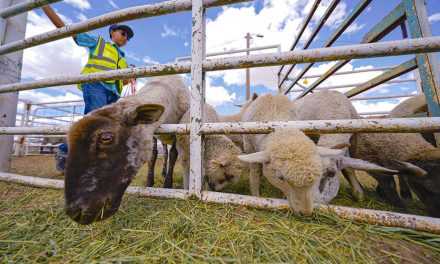
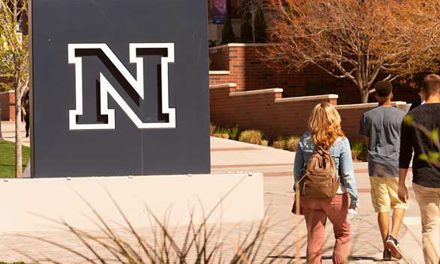
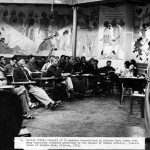
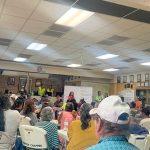



 Highway 264,
Highway 264, I-40, WB @ Winslow
I-40, WB @ Winslow